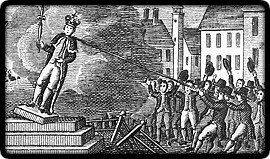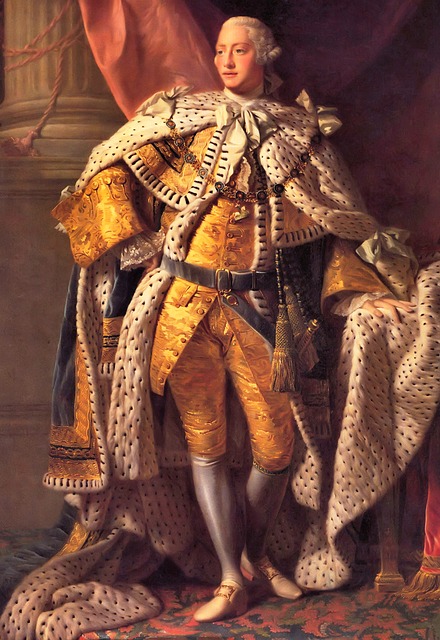Declaration of Independence…
mostly a list of complaints…
The Founding Fathers wrote the Declaration of Independence and started the Revolutionary War, right?
Wrong. The shooting actually started more than a year before it was written. The document was basically high-toned trash talk to King George III. It was a marketing piece, meant to get “the opinions of mankind” on the colonists’ side.

And Thomas Jefferson wrote the Declaration of Independence, right?
Wrong. Old Tom wrote the first complete draft. In fact, he used an 18th century cut-and-paste approach, he recycled a lot of stuff he had already written for the Virginia colonial assembly and he cherry-picked other sources. The Second Continental Congress made significant, often politically motivated revisions to the first draft.
This detail and much more fascinating history about the Declaration is offered in Dr. Pauline Maier’s book, American Scripture: Making the Declaration of Independence (Vintage Books, 1998). For my review, click here
The Second Continental Congress intended the Declaration to explain and help justify the decision to end the regime of King George in the North American colonies. The delegates had no expressed desire to lay down principles to guide and limit the new American government.
A complete reading of the Declaration now is a powerful experience, but it’s a very narrow lesson in American politics. The Declaration is mostly a list of complaints. It’s a recitation of the circumstances that preceded and caused the revolutionary work of the Second Continental Congress. It’s an excuse for the rebellion, done almost after the fact.
The Declaration is not a prescription for government, it’s not a philosophy of government, it’s not a political theory, it’s not a codification of law and it’s not a statement of policy. It’s regrettable that Americans do not have a deeply ingrained reluctance to cite or interpret the Declaration without first re-reading it to refresh their understanding of its rather limited nature.
The dramatic and iconic power of a few words in the Declaration is undeniable: “We hold these truths to be self-evident; that all men are created equal…” Nevertheless, Maier shows that the delegates to the Second Continental Congress never agreed that all men are created equal and have inalienable rights (the dispute about slavery was largely ignored). The so-called “Founding Fathers” used stock phrases (“life, liberty and the pursuit of happiness”) from English political theory, with no explicit agreement on how to realize them in the American colonies.
The men who helped usher in the Revolution never troubled themselves to even remotely consider how “the governed” could realistically give their consent to the “just powers” of government (universal suffrage was not even a talking point in the late 18th century in North America). The Declaration is a bona fide icon in American history, but it’s not a prescriptive model for government or our political heritage. As a “workaday document of the Second Continental Congress,” it served its purpose—to put King George’s transgressions in the limelight—and then was almost forgotten.
Consider this:
The Founding Fathers were an 18th century “Band of Brothers,” right?
Wrong. They were bitterly divided on many issues, they fiercely represented the separate interests of their own colonies, and they allowed their personal and business interests to guide some of their actions.
Beginning in the 1820s, almost 50 years after the Declaration was written, Americans began to remember the old revolutionaries as “mighty fathers whose greatness threw into relief the ordinariness of their descendants.” Thus began the secular beatification of these men that we now commonly revere as the so-called “Founding Fathers.” As a matter of fact, the first person to introduce the words “Founding Fathers” in the American political lexicon—in 1916—was Republican Senator and later President Warren G. Harding.
* * * * * *
Book review. Copyright © Richard Carl Subber 2017 All rights reserved.
St. Ives, another look…
Less than meets the eye
(a book review)
–
As with another eye: Poems of exactitude with 55 free verse and haiku poems,
and the rest of my poetry books are for sale on Amazon (paperback and Kindle)
and free in Kindle Unlimited, search Amazon for “Richard Carl Subber”
© 2017 – 2024, Richard Subber. All rights reserved.

0 Comments